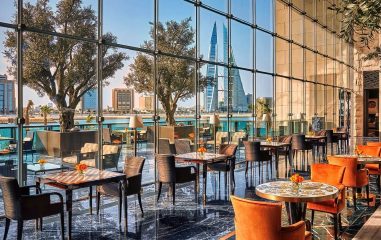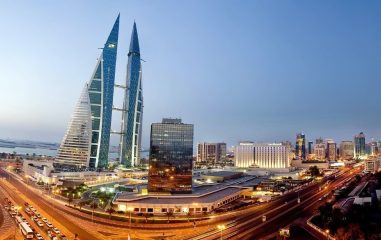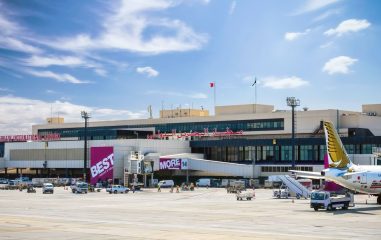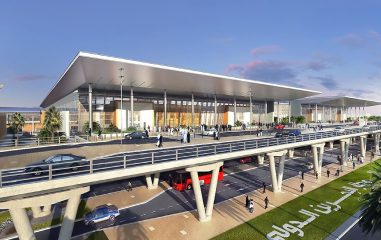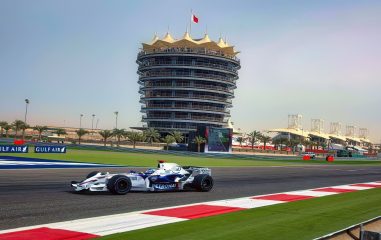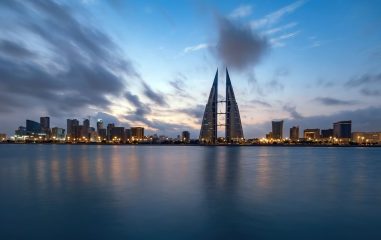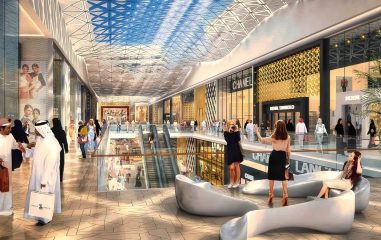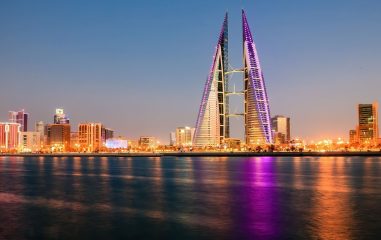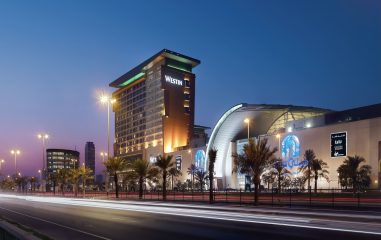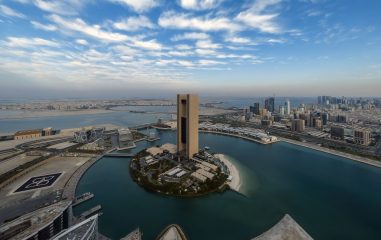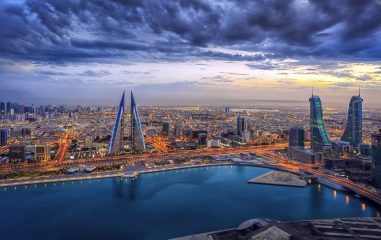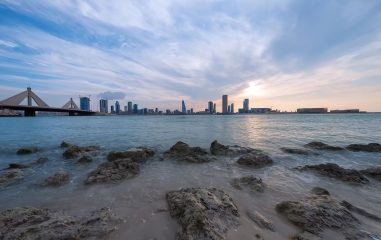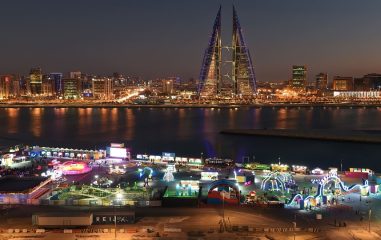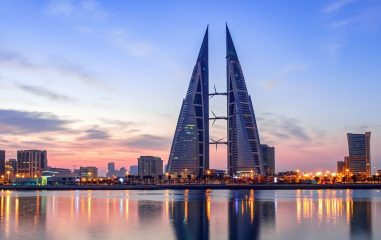BAHRAIN TRAVEL GUIDE
Things To Know About Bahrain
Bahrain is the smallest of the Persian Gulf’s sovereign nations, and it has often had to walk a diplomatic tightrope over its bigger neighbors. Although the country has little oil reserves, it has developed itself as a refinery center and a banking center, as well as establishing a social-liberal monarchy.
Bahrain, a popular weekend destination for visitors from neighboring Saudi Arabia, is a cultural hotspot. UNESCO World Heritage Sites rub shoulders with still-bustling bazaars and carpet shops, while towers housing high-end hotels dot the mosque-studded skyline.
With a recent drive to compete for a spot on the world’s luxury tourism stage, this old port city in the Arabian Gulf now hosts major events — such as Formula 1’s Bahrain Grand Prix — unique experiences, and sophisticated museums that make it worthwhile to include on your itinerary.
While Bahrain was likely the first Gulf state to open up to expats and tourists in the 1970s, it has not felt the need to follow in the footsteps of its more flamboyant neighbor, Dubai. Indeed, this tiny Persian Gulf island has preserved the same allure that once drew Westerners to it. At the same time, it is a totally modern Middle Eastern paradise that appeals to all interests.
Originally a tranquil pearling island, Bahrain gained in geopolitical prominence as its region did, despite having very little oil of its own. Its friendly, permissive monarchy, along with the laid-back lifestyle of its people, made it an appealing R&R destination for the region’s oil workers. Today, it is seen as a weekend getaway for inhabitants of Dubai, Qatar, Kuwait, and Saudi Arabia, while visitors from further afield are flocking to take advantage of its facilities and weather.
With an eight-month-long Mediterranean climate, most travelers flock to Bahrain to worship the sun. While the majority of tourists seldom leave the large selection of nicely outfitted hotels and resorts, there is enough else to do on this historic island. From the high-octane glamour of the annual Formula 1 Grand Prix to the charm of Manama’s ancient neighborhood, to water sports, desert driving, and restaurant hopping, the kingdom has it all.
Over the last two decades, Bahrain has seen a surge in the number of four- and five-star resorts, with no end to the hospitality they offer. All of the big brands are here, each seeking to outdo the others in terms of facilities and comfort. On the other end of the range, the island has a good selection of more homey lodging, ranging from apartments to heritage hotels. While there isn’t much native cuisine, regional Arab food is common, and there is a large choice of international eateries in tourist areas.
Almost all visitors will arrive at Bahrain International Airport, while those from Saudi Arabia can take the Causeway, a bridge that connects the island to the mainland. Gulf Air, the local airline, is extremely well-connected around the world, and most foreign carriers feature Bahrain on their schedules.
The island is small and personal, measuring fewer than 300 square miles and housing a little more than one million people. Manama is commonly regarded as a tourist hub, and travelling about Bahrain is simple and mainly accomplished via taxi. Given its proportions, there is no reason to contemplate hiring a car.
Tourism In Bahrain
Bahrain attracted more than eight million tourists as a tourism destination in 2008, but the precise amount fluctuates year to year. The majority of them are from nearby Arab nations, but they are increasingly arriving from beyond the area, as there is a rising awareness of the Kingdom’s history, which the Bahrain International Circuit F1 is promoting.
The kingdom blends contemporary Arab culture with a five-thousand-year-old civilization’s archaeological legacy. The island is home to fortifications like Qalat Al Bahrain, which has been designated as a UNESCO World Heritage Site. The Bahrain National Museum has items from the country’s history, going back to the island’s earliest human settlers approximately 9,000 years ago, and the Beit Al Quran (Arabic:, meaning “home of the Koran”) is a museum where Islamic artifacts include the Koran. The Al-Khamis Mosque, one of the region’s oldest mosques, the Arad Fort near Muharraq, the Barbar Temple, which is also an ancient temple from Bahrain’s Dilmunite period, as well as the burial mounds of A’ali and the temple of Saar, are among the most famous historical tourist sites. A famous tourist attraction is the Tree of Life, a 400-year-old tree that thrives in the Sakhir desert with no water nearby.
In Bahrain, popular tourist activities include bird viewing (particularly on the Hawar Islands), diving, and horseback riding. Many visitors from neighboring Saudi Arabia and the area come to Manama primarily to shop at the capital’s retail malls, such as the Bahrain City Center and the Seef shopping center in the Seef neighborhood of Manama. The Manama souk and the gold souk in Manama’s ancient district are also popular with visitors.
Since 2005, Bahrain has had an annual “Spring of Culture” event in March, during which internationally renowned singers and artists perform at concerts. The Arab League designated Manama Arab Capital of Culture in 2012 and Arab Capital of Tourism in 2013. Andrea Bocelli, Julio Iglesias, and other artists performed during the 2012 event.
Family Holidays
Bahrain only recently began to receive tourists, despite the fact that surrounding nations are quite popular. Therefore, many vacationers undervalue this location. They believe that there is nothing to do or view on the site. But this is utterly incorrect. The small kingdom boasts a multitude of intriguing locales, a stunning natural setting, and superb entertainment. Even if you are planning a family holiday with children, you will enjoy your stay in this little nation.
When traveling with a family to Bahrain, the first consideration should be selecting a hotel that offers amusement for children. The Four Seasons Hotel Bahrain Bay is a wonderful spot for families to unwind. There are entertainment options for vacationers of all ages. Here, children can play on the white beach, swim in the clear water in the pool, and enjoy themselves on the playgrounds. Additionally, it is possible to leave the child with a nanny or in the hotel’s specialized children’s club. The hotel’s children’s cuisine is an additional bonus. Thanks to this, even the most finicky children will be able to find their favorite cuisine. Free accommodations for children or a discount of fifty percent are additional significant features of the hotel.
The Lagoona Beach Luxury Resort and Spa is regarded as the second-best hotel in Bahrain for families. There, you may relax on the gorgeous beach and take in the breathtaking views of the ocean. Adults can unwind at the Spa. The water park with swimming pools and a pleasant play area will provide children with a terrific time. There are also a room with slot machines and a children’s theater featuring popular and beloved cartoons.
Considered the third-best hotel for family vacations is the Ritz Carlton Bahrain Hotel & Spa. It is situated on the Persian Gulf’s shore. Here is a health facility with a variety of services. A vacationer of every age can find an appropriate option among them. Pools, especially children’s pools, will delight young tourists. The SPA will surely appeal to adults. In addition, the hotel’s buffet features a children’s cuisine and delectable regional desserts.
However, staying in hotels, even with a great deal of entertainment, does not qualify as a complete vacation. Therefore, if you are planning a holiday in Bahrain, you should select a few family-friendly attractions. The Water Garden Park is the first of the amazing locations. There are numerous carousels and slides for children. The most crucial aspect is that children of all ages can discover something to their liking. It is vital to note that minors will not be permitted to access the entertainment area unless accompanied by an adult.
Royal Camel Farm is a camel farm. It is open every day. There is no charge to visit. Not only can you become familiar with camels and learn a great deal about them, but you can also learn how to behave appropriately around them. However, photography and camel riding are prohibited on the farm. Despite the fact that they are racehorses, they belong to the Royal family. Al Janabiyah Park is ideal for relaxed vacations, family picnics, and simply appreciating the surrounding nature.
Bahrain has various varied parks containing a great variety of species. They are visible to children, who can also become acquainted with them. Al Areen Wildlife Park is among the most well-known locations. Here, numerous creatures listed in the red book inhabit their natural habitat. Additionally, you should pay attention to Wahooo! This is the most impressive water park. This is the Middle East’s first outdoor water park. Here, you will undoubtedly be able to enjoy the ideal family vacation. There will be hours of entertainment here. Bahrain is home to a number of attractive and informative museums, as well as mosques, for those who choose to spend their vacations learning and gaining new experiences. Each is replete with its own indelible history and other enthralling legends.
Arman Zoo is a tiny zoo. Here reside goats, cows, deer, crocodiles, numerous birds, and even dogs. In the East, the dog is usually regarded an unclean animal. Therefore, dogs are considered exotic in many nations. These are not the only great sites in Bahrain that the whole family may visit and leave with nothing but good memories. The most crucial aspect of planning a holiday is taking your interests into account. Everyone enjoys something different. This can be both an active and relaxed vacation.
Things to see in Bahrain
The greatest attractions of the kingdom are either in Manama or in the surrounding land and aquatic natural areas of the city. Due to Bahrain’s tiny size, all locations can be reached quickly and easily by taxi.
Manama’s citizens, unlike those of many of its Gulf neighbors, love strolling through the city’s squares in the evenings, when the city truly comes to life. As a result of Bahrain’s legacy of hospitality and tourism, both the city and the surrounding environs provide an abundance of attractions and activities, making it easy to find something interesting to do on short notice.
The Bahrain Fort (Qala’at al-Bahrain) is situated on the north shore, about a five- or ten-minute drive from Manama. Although it has been renovated and is in excellent shape, it needs furniture, signs, and exhibits. The event is free to attend.
A museum, which opened in February 2008, is located adjacent to the fort and includes numerous items dating from the ancient Dilmun period to the Islamic era, many of which were discovered in the fort and nearby ruins. The museum is a huge white rectangular structure with no indication that it is a museum. Daily hours are 8 a.m. to 2 p.m., and admission is free.
The Tree of Life is a metaphor for life. Despite the fact that the trees thrive throughout Bahrain, this one is unique in that it is a 400-year-old tree that has withstood the severe desert environment. You’ll need a vehicle to get reach the tree since it’s off the beaten path and not on a public transportation route.
Take the Zallaq highway east, which becomes the Al-Muaskar highway, to reach the tree. After a while, you’ll notice a sign for the Tree of Life, indicating a right turn. (Despite the fact that the sign seems to suggest that you must turn into a dirt road that leads nowhere, do not do so; instead, wait until the next junction, which is several meters ahead.) There are no signs along this route, so keep an eye out for a junkyard on the right. Turn right just before you reach a hill with a 10-percent-slope warning. You’ll see indications of the Tree of Life again if you continue straight on this route (including roundabouts).
The signs will lead you along a road that will ultimately be empty of these markers, but you will finally see the tree to your right in the distance (it is large and wide, not to be confused with other smaller trees along the way). In Gas Well # 371, it takes a dirt road. You can drive straight out of the tree, but remain on the vehicle-worn route, since turning it off may cause your car to get stuck in the softer sand.
Although it seems to be a tough job, the Tree of Life is worth seeing since it is so unusual. The tree is covered with graffiti, which you won’t see until you get close to it. Arrive just before sunset for a beautiful view of the tree and the surrounding desert.
Things to Do in Bahrain
From the ancient time of Dilmun through the Islamic era, Bahrain has a 5,000-year history. The nation has three forts that have been carefully rebuilt and are accessible to the public, but locating them may be difficult due to a lack of signage and the overall marketing of the country’s tourist sector.
The Bahrain Grand Prix F1 race, held in April at the Bahrain International Circuit, is Bahrain’s most important yearly event. Because tickets are sold out and accommodation rates have quadrupled, plan ahead. People who make their initial bookings are typically given discounts ranging from 10% to 20%. Depending on the grandstand, tickets range from BD 150 to BD 60.
The majority of activities in Bahrain revolve around luxury and pleasure. On the island, hospitality is highly developed, so people who appreciate being pampered will certainly find all they need within their hotel. The four- and five-star properties in the heart of Manama and along the coast are all self-contained paradises with a variety of restaurants, bars, spas, and sun loungers.
Apart from the hotels, Bahraini culture is prevalent and evident across the entire island. From the call to prayer sung by the muezzin to the elaborate Arab architecture of the mosques and housing estates, the island possesses a distinct historical feel.
Pearls were once a source of income for Bahrainis, but since oyster farming has supplanted traditional pearl diving, mollusks remain ripe for harvesting on the seafloor. Aquatique Scuba Centre offers instructive pearl diving courses that cover the history of the industry and culminate in a dive at one of the abandoned pearl beds.
Since 2004, the island of Bahrain has hosted an annual Formula 1 Grand Prix, which is well-known among car enthusiasts. The Bahrain International Circuit at Sakhir on the western side of the island, half an hour by motorway from Manama, is not only the site of motor sports’ most prestigious event, but also hosts a variety of automotive-themed events, including drag racing, drifting, and carting.
The coastal Gulf region acts as a staging area for migratory species, many of which are rare and sought after by twitchers. This is a delight for bird watchers with a more relaxed disposition. Al Reem Tours specializes in eco-tours and offers daily wildlife and bird-watching excursions to the Hawar islands between Bahrain and Qatar. Desert excursions into Bahrain’s sandy interior are also immensely popular among nature enthusiasts.
Manama, the capital of Bahrain, is both a historic old town and a dynamic, modern city with malls, hotels, and entertainment; nonetheless, it has its own unique personality and charm. Al Badr Travels provides a variety of tours around the city, including heritage walks and cruises on dhows, the classic wooden commerce ships that have traversed the Gulf for generations.
Bahrainis are very proud of their past, which continues to be popular in the form of their arts and crafts. The Bahrain Arts Society is a non-profit cultural organization that periodically hosts exhibitions, performances, talks, and workshops meant to teach tourists how to produce Middle Eastern-style traditional handicrafts.
Bahrain, like the rest of the Gulf, has a tax-free economy where no duty is charged on goods. For those who can’t resist buying, a variety of new malls, like as Manama’s large and glitzy Seef Mall, are always offering discounts. There are a variety of souks (markets) and quaint specialized boutiques and pearl shops in the capital for those who want a traditional atmosphere.
The high temperatures in Bahrain make water sports more appealing, and visitors and residents alike indulge in their favorite activity all year in the warm waters of the Persian Gulf. Navigation and diving are two of the most popular activities.
Bahrain features an 18-hole international golf course approximately 15 minutes from the city, Manama, despite being a desert country. There are five lakes on the par 72 golf course, which is surrounded by hundreds of date palms and arid plains.
Enjoy a camel ride along a road. At A’ali Village Ceramics, you may purchase souvenirs as well as real pottery. In the local souk marketplaces, haggle for goods.
Food In Bahrain
Bahrain’s culinary scene is excellent, with many places to select from. Adliya is the primary dining room. In Adliya, there are many cafés to select from, including Coco’s (excellent cuisine at a reasonable price) and Lilou’s (extremely popular among residents who want to see and be seen). Mirai is a fantastic Japanese fusion restaurant that is ideal for celebrating a special occasion. In the neighborhood, you’ll find trendy salons/restaurants like Zoe’s and Block 338.
Restaurants in Bahrain vary from inexpensive booths serving local cuisine to sophisticated restaurants in high-end hotels. Burger King and McDonalds are two of the most well-known fast food businesses in the United States. Western-style dinners and franchises (mainly American) offering cuisine at high-end pricing may be found in shopping malls and in the city center.
Due to the high number of restaurants located in the United States in that region, Juffair has a famous lane known as ‘American’s Alley.’
Geography Of Bahrain
Bahrain is an archipelago in the Persian Gulf, east of Saudi Arabia, that is mostly flat and arid. It comprises of a flat desert plain that gradually climbs on a low center embankment, with a 134 m high mountain smoke as its highest point (Jabal ad Dukhan). Bahrain was originally 665 km2 (257 square miles), but owing to the land reclamation zone, it has grown to 765 km2 (295 square miles), making it somewhat bigger than Hamburg or the Isle of Man.
Previously known as an archipelago of 33 islands, significant land reclamation operations have expanded the number of islands and archipelagos to 84 in August 2008. Bahrain does not have a physical boundary with any nation, although it does have a 161-kilometer coastline. A 22-kilometer (12-nautical-mile) territorial sea and a 44-kilometer contiguous zone are also claimed by the nation (24 nmi). Bahrain has five major islands: Bahrain, the Hawar Islands, Muharraq, Umm a Nasan, and Sitra. Summers in Bahrain are hot and humid, with moderate winters. Large quantities of oil and natural gas, as well as fish in coastal seas, are among the country’s natural resources. Only 2.82 percent of the total land area is used for farming.
Despite the fact that Bahrain is 92 percent desert, with droughts and dust storms on a regular basis, the greatest natural hazards for Bahrain are. Desertification due to the degradation of limited arable land, coastal damage (damage to coasts, coral reefs, and sea vegetation) as a result of oil spills and other large oil discharges, oil refineries, distribution centers, and the recovery of illegal land in places like Bay Tubli are among Bahrain’s environmental problems. The agricultural and household sectors’ overuse of Bahrain’s major aquifer, the Dammam Aquifer, has resulted in salinization of nearby brackish and salt water bodies. The sites of groundwater salinity sources were discovered and their regions of impact were defined in a hydrochemical investigation.
The research found that when groundwater flows from the northwestern region of Bahrain, where the aquifer is supplied with water through lateral overflow from eastern Saudi Arabia in the south and southeast, the water quality of the aquifer is significantly altered. Brackish water rises from brackish water areas in the north-central, western, and eastern regions; seawater penetration in the eastern region; Sabkha water penetration in the southwest region; and irrigation reflux in a local area in the western region are the four types of aquifer salinization identified. In addition to the usage of groundwater in the zone, four options for managing groundwater quality are discussed at the disposal of Bahrain’s water authority, and priority regions are suggested, depending on the type and size of any Versalzungsquelle.
Climate In Bahrain
The Zagros Mountains in Iran, which stretch over the Persian Gulf, are producing low winds in Bahrain. Dust storms in Iraq and Saudi Arabia, carried by northwesterly winds known as Shamalwind, cause decreased visibility in the months of June and July.
Summers are very hot. In the summer, the waters surrounding Bahrain are shallow and warm rapidly, resulting in considerable humidity, particularly at night. Under ideal circumstances, summer temperatures may exceed 50 degrees Celsius (122 degrees Fahrenheit). Bahrain’s rain is light and sporadic. Rainfall is most common in the winter, with a maximum of 71.8 mm (2.83 inches).
Demographics Of Bahrain
Bahrain’s population increased to 1.2 million people in 2010, with 568,399 Bahrainis and 666,172 foreigners. Bahrain’s population grew from 1.05 million in 2007 to over one million in 2007. (517,368 foreign citizens). Although the bulk of the population is from the Middle East, the nation also has a sizable South Asian community. In 2008, over 290,000 Indians resided in Bahrain, making it the country’s biggest expatriate population.
With a population density of 1,646 persons per km2 in 2010, Bahrain is the world’s fourth most densely inhabited sovereign state. City-states are the only sovereign and highly populated states. The majority of the country’s population is located in the north, with the southern governorate region being the least densely inhabited. The north of the nation is so densely populated that it is referred to be a major city by some.
Ethnic Groups In Bahrain
Bahrain’s population is ethnically varied. Baharna and Ajam are the two ethnic groups that make up the Shia Shia. The Baharna ethnic group makes up the bulk of Bahá’ Shiites. The Ajam are Shiite Persians by ethnicity. Shiite Persians live in significant numbers in Manama and Muharraq. Ethnic Hasawis from Al-Hasa make up a tiny minority of Bahraini Shiites.
Sunnis in Bahrain are mostly split into two ethnic groups: Arab (Arabic) and Huwala. Sunni Arabs are Bahrain’s most powerful ethnic group; they hold the majority of government posts, and the Bahraini monarchy is Sunni Arab. Traditional Sunni Arab settlements include Zallaq, Muharraq, Riffa, and Hawar. The Huwala are Sunni Iranian descendants, with some Sunni Persians and some Sunni Arabs among them. Sunnis of Baluchi origin exist as well. The bulk of Bahraini Africans are from East Africa and have resided in Muharraq and Riffa for generations.
Religion In Bahrain
The official religion of Bahrain is Islam, and the majority of Bahrain’s people are Muslims. Although there are no official statistics on the percentage of Shiites and Sunnis among Muslims in Bahrain, Shiites account for 65-75 percent of the population.
Bahrain has a significant Christian population. After the 2010 census, there were 367,683 non-Muslim inhabitants in Bahrain, the majority of them are Christians. The majority of Christians in Bahrain are expats, but Bahraini Christian Christians (who have Bahraini citizenship) make up a smaller group. Alees Samaan, a native Christian from Bahrain, served as Bahrain’s ambassador to the United Kingdom. Bahrain also boasts a local Jewish population of 37 Bahrainis. According to different estimates, Bahrain’s Jewish population numbers between 36 and 50 individuals.
The overall involvement of Muslims has dropped in recent years as a result of the inflow of immigrants and guest workers from South Asian nations such as India, the Philippines, and Sri Lanka. According to the 2001 census, the population of Bahrain was 81.2 percent Muslim, 10% Christian, and 9.8% Hindu or other faiths. According to the 2010 census, Muslims made up 70.2 percent of the population (the 2010 census did not distinguish between non-Muslim religions). Officials from Bahrain’s administration have denied allegations from the opposition that the government is attempting to alter the country’s demographic development by naturalizing Sunni Syrians. Bahá’s account for approximately 1% of Bahrain’s overall population.
Language In Bahrain
Bahrain’s official language is Arabic, although English is commonly spoken. Bahraini Arabic is the most commonly spoken Arabic dialect, but it, like other Arabic dialects, varies significantly from standard Arabic. Because a lawmaker must speak fluent Arabic to represent parliament, according to article 57 (c) of the Bahrain constitution, Arabic plays a significant part in political life.
Many individuals in Bahrain, both Bahrainis and non-Bahrainians, speak Persian, Iran’s official language, or Urdu, Pakistan’s official language. Nepalese is also commonly spoken among Nepalese laborers and the Gurkha Soldier group. Important indigenous populations speak Malayalam, Tamil, and Hindi. All business establishments and road signs are multilingual, with both English and Arabic written on them.

